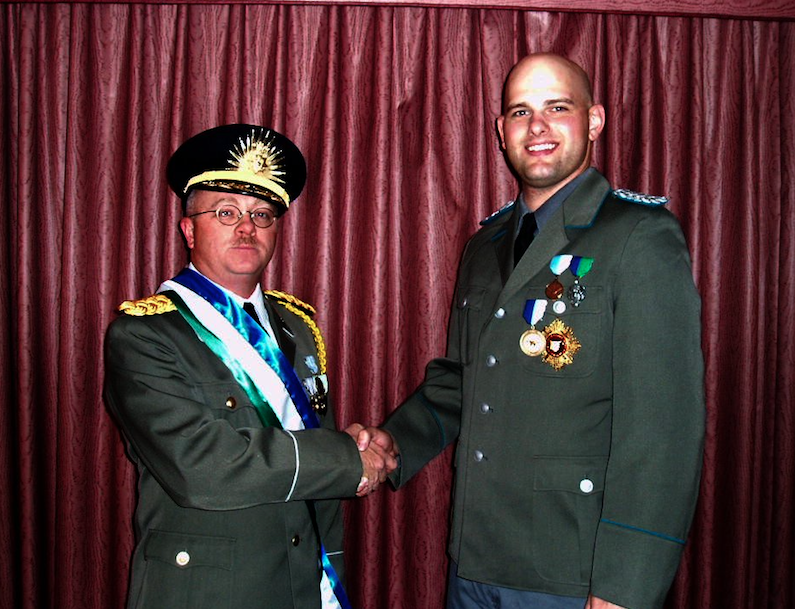Difference between revisions of "Template:POTD protected"
Westarctica (talk | contribs) |
Westarctica (talk | contribs) |
||
| Line 1: | Line 1: | ||
{| role="presentation" style="margin:0 3px 3px; width:100%; text-align:left; background-color:transparent; border-collapse: collapse; " | {| role="presentation" style="margin:0 3px 3px; width:100%; text-align:left; background-color:transparent; border-collapse: collapse; " | ||
|style="padding:0 0.9em 0 0;" | [[File: | |style="padding:0 0.9em 0 0;" | [[File:Molossia-Visit-2005.png|300px]] | ||
|style="padding:0 6px 0 0"| | |style="padding:0 6px 0 0"| | ||
The '''[[ | The '''[[Alliance Between Westarctica and Molossia]]''' is [[Westarctica|Westarctica's]] oldest, and ranks among its most important and influential [[Foreign relations of Westarctica|diplomatic relations]]. Since 2005, [[President Kevin Baugh]] of [[Molossia]] has been an important ally and advisor to [[Grand Duke Travis]], both in his role as [[Grand Duke of Westarctica]] and during his time as the [[King of Calsahara]]. | ||
The shared history of the two nations began in 2005, shortly after the shift from the former identity as the [[Achaean Territory of Antarctica]]. The first significant interaction between the two nations was the signing of an agreement of mutual recognition. That year, Grand Duke Travis and President Baugh met in Washington, D.C. This was the first state visit of any kind for Westarctica. The two became fast friends, and various correspondence and knighthoods were exchanged between the two leaders. | |||
<p><small>Photo Credit: | <p><small>Photo Credit: [[Marquise of Walgreen]]</small></p> | ||
[[:Category:Images|'''(More Images)''']] | [[:Category:Images|'''(More Images)''']] | ||
<div class="potd-recent" style="text-align:right;"> | <div class="potd-recent" style="text-align:right;"> | ||
Revision as of 17:33, 16 October 2022

|
The Alliance Between Westarctica and Molossia is Westarctica's oldest, and ranks among its most important and influential diplomatic relations. Since 2005, President Kevin Baugh of Molossia has been an important ally and advisor to Grand Duke Travis, both in his role as Grand Duke of Westarctica and during his time as the King of Calsahara. The shared history of the two nations began in 2005, shortly after the shift from the former identity as the Achaean Territory of Antarctica. The first significant interaction between the two nations was the signing of an agreement of mutual recognition. That year, Grand Duke Travis and President Baugh met in Washington, D.C. This was the first state visit of any kind for Westarctica. The two became fast friends, and various correspondence and knighthoods were exchanged between the two leaders. Photo Credit: Marquise of Walgreen |